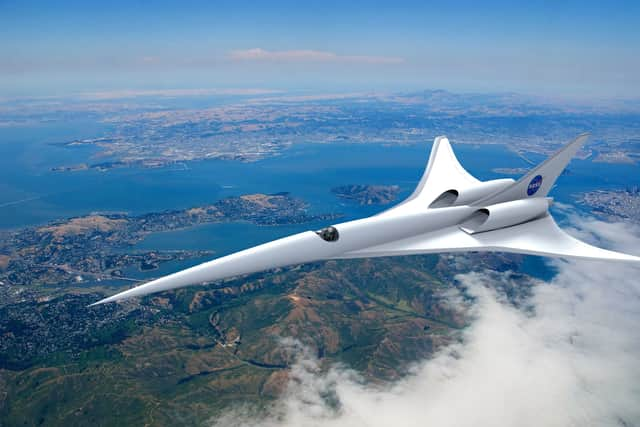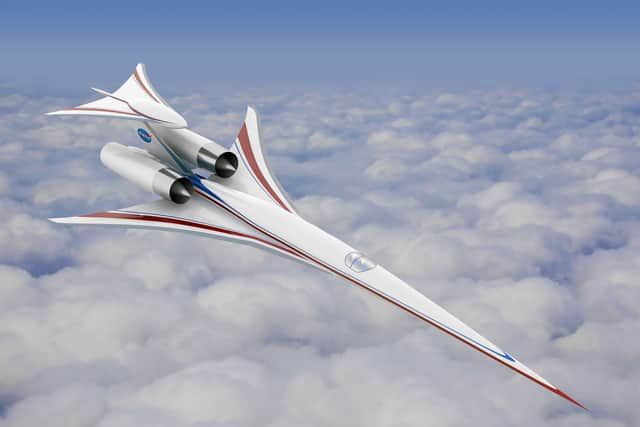NASA X-59: 'Son of Concorde' could fly London to New York in 1.5 hours
and live on Freeview channel 276
NASA’s X-59 quiet supersonic aircraft has been moved to the paint barn at Lockheed Martin Skunk Works’ facility in Palmdale, California, says the space agency.
Advertisement
Hide AdAdvertisement
Hide AdOnce painted, the team will take final measurements of its weight and exact shape to improve computer modeling.
The supersonic passenger plane aims to fly faster than the speed of sound, at almost twice as fast as Concorde.
Engineers are aiming to reduce the sound of the typical sonic boom to a sonic thump to minimise disruption to people on the ground.
NASA said in August they have identified potential passenger markets in about fifty established routes that connect cities.
Advertisement
Hide AdAdvertisement
Hide AdIt is hoped one route would see flights from New York City to London up to four times faster than what’s currently possible.


NASA says the aircraft made the move to the paint barn on 14 November, adding: "The X-59’s paint scheme will include a mainly white body, a NASA “sonic blue” underside, and red accents on the wings.
"The paint doesn’t just add cosmetic value. It also serves a purpose – the paint helps to protect the aircraft from moisture and corrosion and includes key safety markings to assist with ground and flight operations."
Cathy Bahm, the low boom flight demonstrator project manager, said: "We are incredibly excited to reach this step in the mission. When the X-59 emerges from the paint barn with fresh paint and livery, I expect the moment to take my breath away because I’ll see our vision coming to life.
Advertisement
Hide AdAdvertisement
Hide Ad"The year ahead will be a big one for the X-59, and it will be thrilling for the outside of the aircraft to finally match the spectacular mission ahead.”


The aircraft is the centerpiece of NASA’s Quesst mission, through which NASA will fly the X-59 over several to-be-selected US communities and gather data about people’s perceptions about the sound it makes.
NASA will provide that data to regulators which could potentially adjust current rules that prohibit commercial supersonic flight over land.
Earlier this year, the space agency investigated the business case for supersonic passenger air travel aboard aircraft that could theoretically travel between Mach 2 and Mach 4 (1,535-3,045 mph at sea level).
By comparison, today’s larger airliners cruise at roughly 600 mph, or about 80% of the speed of sound.
Concorde had a maximum cruising speed of 2,179 km (1,354 miles) per hour, or Mach 2.04.
